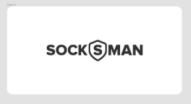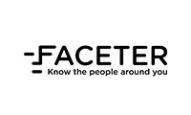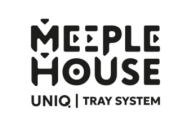GDPR Compliance
In today’s globalized world, the protection of personal data on online platforms, apps, and games is a growing concern — not only for regulatory authorities, but also for users themselves. Mishandling personal data can lead to severe consequences, including hefty fines, operational bans, or being blocked from operating in jurisdictions where data protection laws are violated.
When the General Data Protection Regulation (GDPR) came into effect on May 25, 2018, it significantly raised the bar for how personal data must be handled across the European Union. GDPR replaced outdated rules, reinforced existing practices, and introduced new, stricter standards for data controllers and processors. It also has extraterritorial reach, meaning any organization that processes personal data of EU users must comply — regardless of where the company is based.
Non-compliance with GDPR can result in fines of up to €20 million or 4% of a company’s annual global turnover, whichever is greater. These aren’t just theoretical numbers: in 2019, Google was fined €50 million for failing to properly inform users about how their data was being used. Since then, major fines have been imposed on companies like Amazon, Facebook, and TikTok for breaches involving lack of transparency, improper consent practices, and non-compliant data processing methods.
Table of Contents
Common GDPR Violations
- Lack of transparency in how personal data is processed
- Improper collection of user consent
- Failure to uphold data subject rights (e.g., access, correction, deletion, or data portability)
- Inadequate security measures leading to data breaches
How to Achieve GDPR Compliance?
Compliance requires a thoughtful and structured approach to data management. If your company collects or processes personal data from users in the EU — or offers services in the EU — GDPR compliance is mandatory.
GDPR Compliance Audit
The first step is a comprehensive audit. During this process, experts evaluate:
- The types of personal data collected
- Data protection and security measures in place
How data is shared with third parties and how those relationships are managed. If your business previously followed data protection regulations that were in place before GDPR, this may help simplify the transition.
After conducting the audit, leading lawyers develop a personalized plan to bring the business into compliance with GDPR.
GDPR Tailored Compliance Plan
-
Training your team on GDPR requirements
-
Adjusting internal processes to reflect user rights and key compliance principle
-
Implementing systems for properly documenting data processing activities
Legal Documentation and Policies
Proper documentation is essential to demonstrate compliance. Your company should have clear, legally sound documents, including:
- Privacy Policy
- Cookie Policy
- Terms of Use
Valid Consent Collection
Under GDPR, user consent must meet specific criteria:
- Freely given, specific, informed, and unambiguous
- Collected separately for each purpose
- Properly documented and stored
Many companies still fall short here, using vague language or pre-checked boxes — practices that are not compliant and may result in fines.
Implementing a GDPR-Compliant Cookie Banner
To lawfully inform users about cookie usage, platforms must implement a clear, accessible cookie banner. A small, unobtrusive pop-up in the corner of the screen is not enough. The key requirement is to give users a genuine choice and control over their data preferences.
Appointing a Data Protection Officer (DPO)
In some cases, GDPR requires the appointment of a Data Protection Officer (DPO) — particularly when large-scale or systematic data processing is involved. A DPO helps ensure ongoing compliance and can significantly reduce legal risks.
Processing Children’s Data
To process the personal data of users under 16, parental or guardian consent is required. In practice, verifying this consent can be challenging. The solution lies in implementing legally compliant procedures and reliable verification technologies.
Compliance with Local Data Laws
Beyond GDPR, many countries enforce their own data protection laws — such as CCPA in the U.S., LGPD in Brazil, and local data regulations in Russia and China. Your compliance strategy should take these into account and ensure full transparency across jurisdictions.
Meeting data protection requirements not only shields your business from fines and legal actions — it also builds user trust and strengthens your competitive advantage in the marketplace.




























































